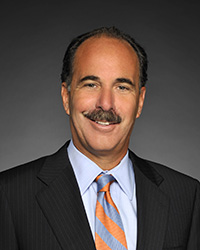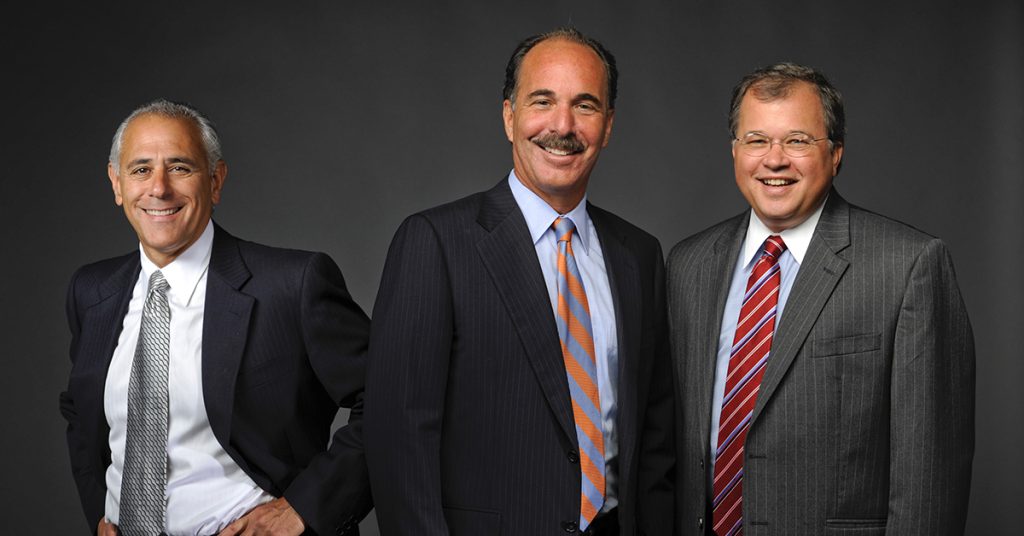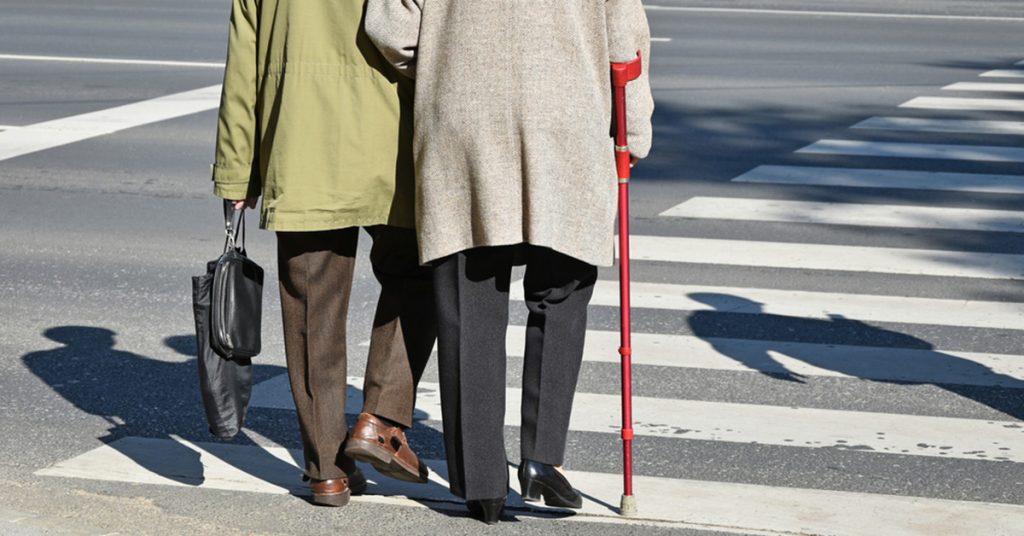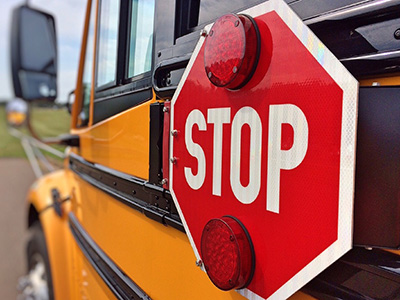Posts Tagged ‘Boston pedestrian accident lawyers’
Attorney Marc L. Breakstone Reaches $2.15 Million Settlement with Shopping Plaza Over Fatal Crash in Unsafe Parking Lot

Attorney Marc L. Breakstone has settled a wrongful death case involving a crash at a shopping plaza which failed to protect pedestrians. He has settled the case for the victim’s family for $2.15 million.
The settlement is a reminder that retail property owners have a responsibility to take adequate steps to protect customers and other pedestrians in Massachusetts.
Our client was a 73-year-old man who was killed in 2015. That November, he had been leaving a store with a friend and was hit and killed by an 87-year-old driver. The driver had suddenly and unexpectedly accelerated through the parking lot and onto the sidewalk. Our client died immediately from his injuries, while his friend and another pedestrian were also injured.
Attorney Breakstone conducted a thorough investigation into the crash, which was captured on multiple surveillance cameras. Evidence suggested the elderly driver hit the accelerator instead of the brake.
As his investigation developed, Attorney Breakstone determined the owner of the shopping plaza had failed to provide adequate protections for pedestrians in the spot where our client was killed. This was significant because the owner had taken care to set up protections in other areas. Over the years, more than 30 bollards had been placed at the rear and side of the shopping building. Bollards had also been installed in front of another retail store, but not where the accident occurred.
Had the case gone to trial, Attorney Breakstone was prepared to call an engineering expert to testify that this was a breach of industry standards for providing safe walkways.
Read more about this case on our website.
About Attorney Marc L. Breakstone
Attorney Breakstone has established a reputation as one of the top personal injury lawyers in Massachusetts and New England. He has been recognized as a Top 100 New England Super Lawyer, a Top 100 Massachusetts Super Lawyer and a Massachusetts Super Lawyer in Plaintiff’s Medical Malpractice. Read his bio.
After Fatal Pedestrian Crash, City of Somerville Looks at Traffic Calming Measures

Somerville residents are asking for new traffic calming measures after a fatal pedestrian crash last weekend on Powder House Boulevard and Hardan Road. Police are searching for the driver, who fled the scene.
The Somerville community is wrestling with the horrific crash that killed a teacher in a crosswalk last Friday night.
Somerville Police are still searching for the driver in the Somerville pedestrian crash. The driver struck Allison Donovan, an educator in the Watertown public school system, shortly after 7 p.m. Friday, then fled the scene. Another woman in the crosswalk suffered non-life-threatening injuries.
As police investigate, city officials say a community meeting will be held to discuss accelerating traffic calming measures for the area. The pedestrian accident happened on Powder House Boulevard, at the intersection of Hardan Road, near the West Somerville Neighborhood School. In response to the crash, the city began setting up flex posts with neon reflectors Monday.
For the short term, Somerville Police will be there to assist students who are dropped off and picked up at the West Somerville Neighborhood School. Message boards are also being deployed in the area along with the flexposts.
But residents are now calling for more, including speed bumps to force drivers to slow down.
Traffic Measures to Change Driver Behavior
Communities can implement traffic calming measures to change driver behavior and improve safety conditions for non-motorized street users. Speed bumps and raised intersections are two examples of traffic calming measures. Other examples may include protected bike lanes and cycletracks which allow cyclists to travel inside curbing and away from cars, trucks and rideshare vehicles.
Different areas may require different traffic calming measures. Some communities may address a single intersection or street. But often, communities are working on larger areas.
Slower speed limits are another traffic calming measure. Boston, Cambridge and Somerville were among the first communities to reduce speeds to 25 mph a few years ago, when the state gave communities this authority.
In Somerville, city officials have already implemented many traffic calming measures, including on Powder House Boulevard, which has received physical and painted sidewalk bumpouts, improved crosswalk markings and flashing stop and crosswalk signs and vertical reflective crosswalk markers. In the City of Somerville’s online update, it also noted there is a flashing pedestrian activated crosswalk sign at the intersection near Hardan St. This is where the pedestrian crash happened.
But this spring, Somerville city officials had planned additional traffic calming measures on Powder House Boulevard, between Curtis Avenue and North Street (the fatal pedestrian accident happened in this area). Speed bumps and traffic tables were already on the schedule to be considered after the completion of bike lanes and sidewalk bumpouts. Now, city officials say they are seeking options to bring in speed bumps and traffic tables sooner.
About Breakstone, White & Gluck – Free Legal Consultation
The Boston personal injury lawyers at Breakstone, White & Gluck specialize in representing those injured by pedestrian accidents and other car accidents. Over the past three decades, our attorneys have helped pedestrians and their loved ones understand their legal rights and obtain the full compensation they need for their injuries. When a loved one is lost, a surviving spouse or the decedent’s children may be able to pursue a wrongful death claim against those who were negligent. Our attorneys are experienced in representing families in wrongful death claims in Massachusetts.
For a free legal consultation, call Breakstone, White & Gluck: 800-379-1244, 617-723-7676 or use our contact form.
Breakstone, White & Gluck Recognized by Super Lawyers for 15th Year

Ronald E. Gluck, Marc L. Breakstone and David W. White of Breakstone, White & Gluck
We are pleased to announce that Breakstone, White & Gluck and our attorneys have been recognized by Super Lawyers for the 15th year. Super Lawyers is a rating service of outstanding lawyers who have attained a high-degree of peer recognition and professional achievement. Lawyers are rated nationwide, across 70 practice areas, with just a select number recognized.
2018 Recognition
In 2018, our lawyers have been named to a number of Super Lawyers lists, including the 2018 Top New England Super Lawyers, 2018 Top 100 Massachusetts Super Lawyers and 2018 Massachusetts Super Lawyers in personal injury and medical malpractice, and the 2018 Rising Stars list.
Marc L. Breakstone has been selected to the Top 100 New England Super Lawyers, Top 100 Massachusetts Super Lawyers and to the 2018 Massachusetts Super Lawyers list, recognized as a top-rated medical malpractice attorney in Boston.
David W. White has been selected to the 2018 Massachusetts Super Lawyers list, recognized as a top-rated personal injury attorney in Boston.
Ronald E. Gluck has been selected to the 2018 Massachusetts Super Lawyers list, recognized as a top-rated personal injury attorney in Boston.
Reza Breakstone has been selected to the 2018 Massachusetts Rising Stars list.
About Breakstone, White & Gluck

Reza Breakstone
Marc L. Breakstone, David W. White and Ronald E. Gluck founded the law firm of Breakstone, White & Gluck in Boston in 1992. Reza Breakstone joined the firm as an associate in 2015.
At Breakstone, White & Gluck, our Boston personal injury lawyers fight for justice for those who have been seriously injured or killed by the negligence and wrongdoing of others. Our lawyers have won numerous record-setting verdicts and settlements. We specialize in cases involving personal injury, medical malpractice, wrongful death, traumatic brain injuries and motor vehicle crashes. Read more.
Super Lawyers Ratings: Built on Peer Reviews
The 2018 New England Super Lawyers listings, just released, are meant to serve as a resource to help those searching for attorneys and are available for free online. Most years, they are published in Boston Magazine. When you visit a law firm’s website, you can also look for the Super Lawyers badge to see if a lawyer has been rated.
Super Lawyers, a Thomson Reuters business, recognizes the top 5 percent of lawyers across the state, along with a Rising Stars list highlighting the top lawyers under 40 years old (or the top 2.5 percent statewide). Lawyers are rated through a multiphase selection process, including a statewide survey of lawyers, independent research evaluation and peer reviews by other top-rated attorneys in a practice area. The peer reviews are what make the Super Lawyers listings so valuable to consumers and other attorneys. When you call a lawyer rated by Super Lawyers, you can trust other highly experienced lawyers have already reviewed the lawyer’s skills and experience in their specialty.
The independent evaluation considers the following 12 indicators:
- Verdicts/Settlements
- Transactions
- Representative Clients
- Experience
- Honors/Awards
- Special licenses/certifications
- Position within the law firm
- Bar and/or professional activity
- Pro bono and community service
- Scholarly lectures/writings
- Education/employment background
- Other outstanding achievements
New Federal Recommendations to Reduce Pedestrian Fatalities and Injuries
 Pedestrians are facing a crisis on the roads, here in Boston and across the country. From 2009 to 2015, there was a 46 percent increase in pedestrian deaths across the U.S. (Source: National Highway Traffic Safety Administration).
Pedestrians are facing a crisis on the roads, here in Boston and across the country. From 2009 to 2015, there was a 46 percent increase in pedestrian deaths across the U.S. (Source: National Highway Traffic Safety Administration).
Now, the National Transportation Safety Board (NTSB) is stepping in with a comprehensive set of recommendations to improve safety, including: Read More
Expect Traffic Enforcement As Students Head Back to School in Massachusetts

With students back to school in Massachusetts, local police departments are stressing safety around school buses while stepping up enforcement of drivers who fail to stop for pedestrians in crosswalks.
If a traffic enforcement sting came to your community, how many drivers would be stopped and cited for unsafe driving? Would you be among them?
We ask these questions as students head back to school across Massachusetts, in communities from Boston and Cambridge to Plymouth and Brockton to Worcester and Springfield.
Police departments across the state have set up traffic enforcement over the past few weeks, focusing on drivers who are not stopping for pedestrians in crosswalks and school buses. A few of the communities include New Bedford, Attleboro and South Boston.
In South Boston, the surveillance followed the tragic death of a 2-year-old in a traffic crash. The child was being pushed in a stroller on the sidewalk, when a van and car collided. The van plowed onto the sidewalk, injuring and ultimately killing the young boy. A day after the crash, the Boston Police Department and Massachusetts State Police set up a traffic enforcement initiative focusing on crosswalk enforcement, speeding and other unsafe driving behaviors. Within a few days, officers had issued approximately 500 citations for traffic violations. This is a very telling number, one Massachusetts drivers can’t ignore.
Breakstone, White & Gluck is a Boston law firm which specializes in personal injury, medical malpractice and car accident cases. Our firm is committed to safety for children, giving away over 20,000 bicycle helmets to children in Massachusetts through our Project KidSafe campaign. With experience representing clients who have been injured in pedestrian crosswalk accidents and other traffic crashes, we offer these tips for safe driving:
Slow down at crosswalks. Students who walk to school may have a crossing guard help them across the street. Always slow down as you approach crossing guards and children. Make eye contact with the crossing guard and assume you should stop. The crossing guard will wave you through when it’s safe to go.
But even when there is no crossing guard, drivers must stop for pedestrians in the crosswalk when there is a “Walk” or green signal. Other times, drivers have a responsibility to yield the right of way by slowing or stopping for pedestrians in the crosswalk. This includes times when pedestrians are in the crosswalk on the same side as the driver and when pedestrians are approaching from the other half of the lane and within 10 feet. There is a $200 fine for crosswalk violations in Massachusetts.
The best thing to do is approach crosswalks slowly and stop if you see anyone even near the entrance of the crosswalk. If you can, make eye contact with them, then wave for them to go. Depending on whether other cars stop, they may not be able to immediately cross. You may need to be patient for a few moments.
M.G.L. c.89 § 11 is the law governing pedestrian rights in crosswalks in Massachusetts. Read more about the law.
Massachusetts Communities Fight Back Against Traffic Detour Apps

Local communities are restricting road use to stop the flood of drivers who use Waze and other traffic apps.
Commuting is a battle in Massachusetts, full of frustrations and hazards. But residents, communities and lawmakers continue to fight back to improve safety.
On Monday, the state House of Representatives considered a controversial bill proposing new fines for jaywalking and jaywalking while distracted (or as The Boston Globe writes, “Jay-texters”). Meanwhile, WBZ reports communities are closing off roads in response to traffic apps such as Waze and Google Maps.
Jaywalking Bill. On Beacon Hill, Rep. Colleen M. Garry, D-Dracut, has proposed Bill H.1834, which would allow cities and towns to impose stronger penalties against jaywalking. The current penalty is $1, which isn’t much of a deterrent. But this new bill proposes:
- Jaywalkers may be fined $25 for a first offense, $50 for a second offense and $100 for a third or subsequent offense.
- The proposal calls for new and increased fines for pedestrians who violate the jaywalking law and are using mobile devices or earphones. Using a mobile device will increase the fine to $50 for a first offense, $100 for a second offense and $200 for a third or subsequent offense.
Massachusetts is not the only state considering action. In New York, the State Assembly passed a law for New York City to study the problem. As of last month, the City of Honolulu began ticketing pedestrians who are texting or reading from a cell phone. The price? Up to $99 per violation.
While pedestrian texting bans are new, 47 states and Washington D.C. now have laws which ban texting while driving. Puerto Rico, Guam and the U.S. Virgin Islands also have bans. Massachusetts passed its texting while driving ban in 2010.
This is a controversial topic. We will be among those watching the State House this week.
Traffic Detour Apps. WBZ reported on Monday that drivers are continuing to make use of apps such as Waze and Google Maps, which help them find the shortest route (Note: Waze was actually acquired by Google in 2013). But regardless of the specific brand name, police departments say these apps are a safety issue because they change traffic flow and draw large amounts of traffic to residential roads.
Now cities, such as Medford, Cambridge, Brookline and Belmont have taken action, by closing off roads or posting no turn signs.
Here are a few notes for your commute:
- In October, Medford Police announced Bracket Street at Elm Street is residents only on weekdays from 7 a.m. to 9 a.m. and 4 p.m. to 6 p.m.
- Belmont has installed no right turn signs off Brighton Street.
- Brookline has restricted access to several roads off Clyde Street.
- In Cambridge, Fresh Pond Parkway is also closed to through traffic.
These are two stories for every commuter to follow. We will write more about both topics in the weeks and months to come.
About Breakstone, White & Gluck
The Boston car accident attorneys at Breakstone, White & Gluck have over 100 years combined experience representing pedestrians, cyclists, drivers and passengers who have been injured by negligent drivers. If you or a loved one has been injured, learn your rights for seeking compensation. After a car accident, you may incur medical expenses, have to take time off from work and no one can predict how long recovery will take. For these reasons, it is important to contact an experienced Boston car accident lawyer.
For a free legal consultation, contact our attorneys at 800-379-1244 or 617-723-7676 or use our contact form.
Pedestrian Deaths in Boston are Rising
 Pedestrian safety was the focus of several NBC Boston reports last night. One segment was called “Boston’s Crosswalk Crisis” and another was called “Cro$$walk Crisis: Private Funding for Public Ways.” They are worth viewing for anyone who lives or works in Boston. A few figures from the reports:
Pedestrian safety was the focus of several NBC Boston reports last night. One segment was called “Boston’s Crosswalk Crisis” and another was called “Cro$$walk Crisis: Private Funding for Public Ways.” They are worth viewing for anyone who lives or works in Boston. A few figures from the reports:
- Pedestrian deaths rose 15 percent in Boston in 2016.
- Nine pedestrians have died this year, up 30 percent from this time last year.
- In addition to these deaths, 384 pedestrians were hit and required medical attention during the first half of 2017.
The news station also reported that some Boston residents are taking charge and raising funds to build crosswalks. This is not cheap. In the South End, Tremont Street residents are trying to raise $25,000 for crosswalks at the intersection of Tremont and Union Park and Upton and Columbus and Rutland.
As pedestrian fatalities have risen, the City of Boston’s Vision Zero Task Force has been working to make the city safer for pedestrians and cyclists. The task force’s goal is similar to Vision Zero task forces in other major cities – to eliminate transportation deaths by 2030.
The rise in pedestrian deaths is discouraging, especially since the task force was recently successful in lowering default speed limits in Boston. Lower speeds mean fewer accidents because drivers have more time to respond.
The task force had to obtain Legislature approval to lower the city’s default speed limit from 30 mph to 25 mph. Now all cities in Massachusetts can opt-in and lower speed limits if they choose. A number of communities already have, including Cambridge, Somerville, Quincy and Milton.
Boston Pedestrian Accident Lawyers
At Breakstone, White & Gluck, our Boston pedestrian accident lawyers have over 30 years of representing those who have been injured and killed by negligence in Massachusetts. Our attorneys have represented numerous families who have lost loved ones in pedestrian accidents, even in the crosswalk where they should have been safe. In 2005, one of our clients was struck by an MBTA bus right in a crosswalk on Washington Street in the South End of Boston.
Drivers Have to Slow Down
Boston has some of the most congested roads in Massachusetts and many have been taken over by construction over the past few years. Drivers need to take even more care when traveling in the city and watch out for pedestrians and cyclists. Yet they often don’t and the roads tend to be more congested this time of year in Boston and Cambridge, as college students move in and elementary schools re-open.
Walk down any city street and chances are, you will see someone sitting in a car at a traffic light or stopped in traffic, ear to cell phone. In-vehicle devices which allow hands-free talking or map out directions are not always safer, either. When it comes to intersections or at parking garages, shopping plazas or schools, drivers need to give the road their full attention – and slow down.
Contact Breakstone, White & Gluck for a Free Legal Consultation
If you or a loved one has been injured in a Boston pedestrian accident, you may have the right to seek compensation from the responsible driver. Contact us for a free legal consultation at 800-379-1244 or 617-723-7676 or use our contact form.
You can also read about Breakstone, White & Gluck’s recent settlements and awards for clients in pedestrian cases.
Protecting Massachusetts Students Heading Back to School
 There is much to plan as students return to school each September. Buying new school supplies and clothes often makes the top of the to-do list, but even more important is planning how your child will travel to and from school safely.
There is much to plan as students return to school each September. Buying new school supplies and clothes often makes the top of the to-do list, but even more important is planning how your child will travel to and from school safely.
Approximately 17,000 children are sent to U.S. emergency rooms each year in school bus accidents, according to a 2006 report in the journal Pediatrics. Some 42 percent of student bus accident injuries and deaths result from crashes. But nearly 25 percent of school bus injuries occur during the everyday activity of boarding and stepping down from the bus.
There are many ways students travel to school: the school bus, parent car pools, walking and bicycling. All of these carry a risk for injuries and accidents – but this can be greatly reduced when drivers and students follow the rules of safety. Here the Boston personal injury lawyers at Breakstone, White & Gluck offer parents tips to keep their children safe:
Avoiding School Bus Accidents:
- Most Massachusetts school districts do not have seat belts on school buses, but if yours does, explain the importance of wearing one to your child.
- Instruct your child to wait until the bus is completely stopped before trying to board or exit.
- Tell your child to stand at least six feet back from the curb as the bus approaches.
- Explain to children they should never cross the street behind a bus because it may result in a pedestrian accident.
- Wait at the bus stop with young children. If you cannot do this every day, ask another parent to share the responsibility with you.
Avoiding Student Pedestrian Accidents:
- If possible, walk to school with your child. Arrange a neighborhood school walk and have parents take turns supervising.
- If your child is walking alone, explain that he or she must cross the street in the crosswalk under the supervision of a school crossing guard.
- Have your child wear bright colored clothing to avoid car accidents.
Avoiding Student Carpool Accidents:
- All children should wear seat belts. In Massachusetts, children ages five to seven or up to 4’9″ tall are required to travel in a child safety seat.
- Children under the age of 13 should ride in the back seat.
- Explain to children they should talk softly and let the driver concentrate on the road.
Avoiding Student Bicycle Accidents:
- In Massachusetts, children and teens age 16 and under are required to wear bike helmets.
- Do not allow young children to bicycle to school.
- Make sure your child has the appropriate experience on a bicycle and is familiar with traveling the route to school.
- Teach children to ride in the same direction as traffic on the right side of the road.
- Children and teens bicycling to school should wear bright colored clothing.








